Morning Eye Candy: In a Drop
Posted in Photography on May 28 2011, by Ann Rafalko
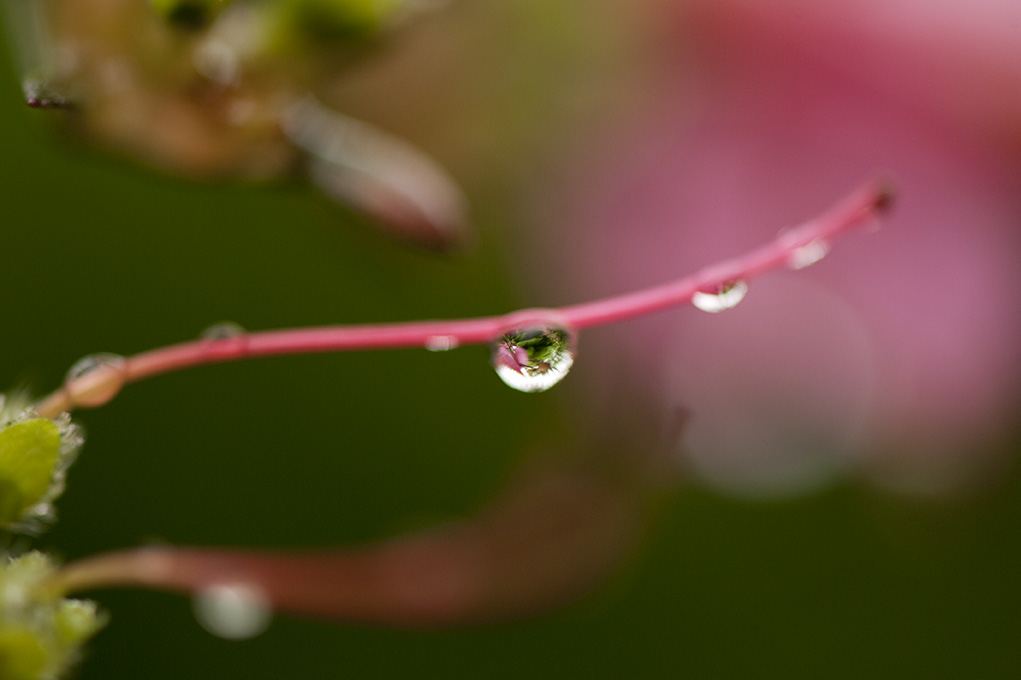
Rhododendron ‘Hinomayo’ (photo by Ivo M. Vermeulen)

Inside The New York Botanical Garden
Posted in Photography on May 28 2011, by Ann Rafalko

Rhododendron ‘Hinomayo’ (photo by Ivo M. Vermeulen)
Posted in Photography, Wildlife on May 27 2011, by Ann Rafalko
NYBG Member and amateur wildlife photographer Patricia Gonzalez took these amazing photographs of a mama Wood Duck and her 17 ducklings!

Can you imagine trying to keep them all straight?
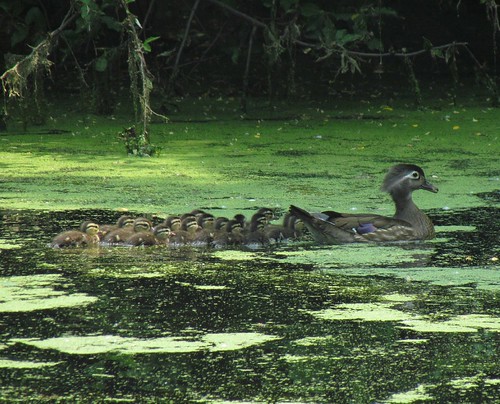
What would you name each of them?
Posted in Photography on May 27 2011, by Ann Rafalko
I see you, little bird!
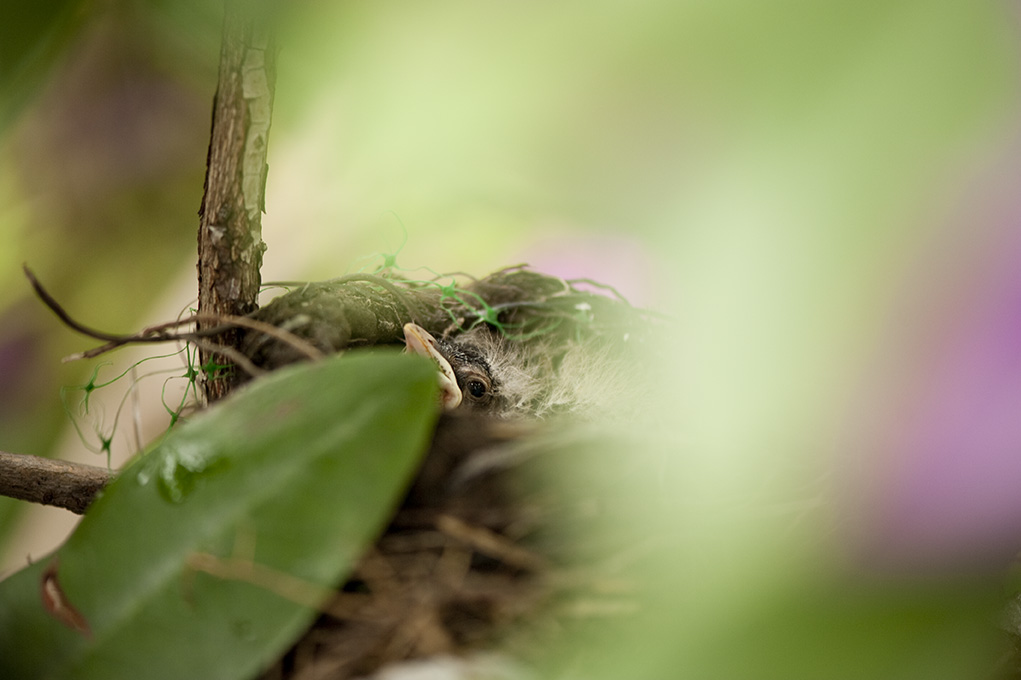
Baby Bird (photo by Ivo M. Vermeulen)
Posted in Around the Garden on May 26 2011, by Ann Rafalko
| Ann Rafalko is Director of Online Content. |
The weather was just fabulous yesterday, so I decided to take advantage of it and left my cubicle for a stroll through the Perennial Garden. It was packed with happy visitors sitting in the sun, snapping pictures, and strolling through the long-awaited sunshine. I had a great time chatting about flowers, our current exhibition, Spanish Paradise: Gardens of the Alhambra, and the Garden in general. Here are a few pictures I managed to snap in-between conversations.
Posted in Gardening Tips on May 26 2011, by Sonia Uyterhoeven
 |
Sonia Uyterhoeven is Gardener for Public Education. |

Pruning
The best pruning jobs begin with a goal, a determination of what needs to be accomplished–reducing size, controlling shape, rejuvenating growth. As with all pruning jobs, removing the dead and diseased wood is the first call of order. Then take a step back and look at the framework before moving ahead with your mission.
See also: Native Azaleas
The best time to prune azaleas and rhododendrons is immediately after bloom into mid-July. If you wait too long, buds will already have formed for the following year. In general, azaleas and rhododendrons need minimal pruning.
Reducing Size
To reduce the height of an azalea while allowing it to retain its natural appearance, follow the branch targeted for removal down to a lower lateral branch, and make a cut just above the point of intersection. The cut should be slightly above where the two branches intersect so as not to cut into the tissue of the branch that will remain.
Another way of reducing the size of an azalea is to cut it back to just above a whorls of leaves. Also look for circular scars around the stem, where leaves once were. Cutting just above these areas should create good bud break. In either case, make the cut just above new buds, whether they are visible or latent.
Controlling Shape
Evergreen azaleas can be sheared back to form nice mounds if desired. If you are pruning the azalea into a mound, remember to occasionally open up the plant and let some light penetrate into the dense mass of foliage so that it doesn’t get too congested.
See also: Azalea Planting Tips
If you’d like to make a young azalea or rhododendron more compact and well-branched, the easiest thing to do is to pinch off the vegetative buds in spring. First take a look at the plant to familiarize yourself with the bud system. The fat swollen buds are flower buds. These form in the previous season and overwinter, and you’ll want to leave these alone. They are generally twice the size of the vegetative buds, which are the narrower, pencil-like, smaller buds.
Posted in Photography on May 26 2011, by Ann Rafalko
Have you ever stopped to smell the irises? They’re sublime! Each one has a different aroma, like a mix of the finest perfume with just a touch of fruit soda. Sniff them while you can!
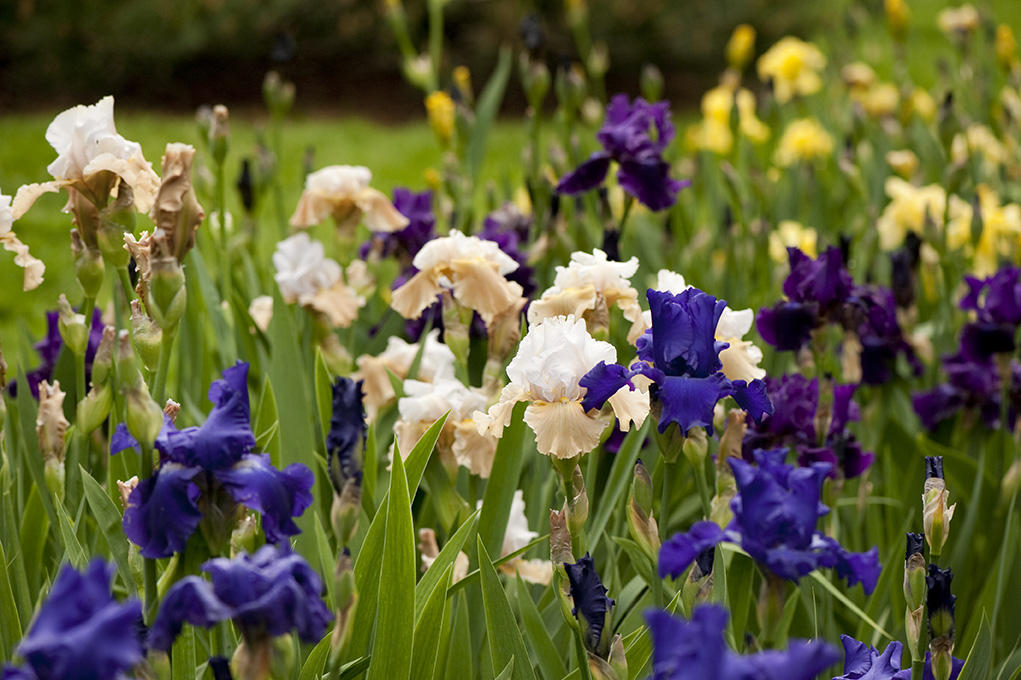
Irises on the Ladies’ Border (photo by Ivo M. Vermeulen)
Posted in Photography on May 25 2011, by Ann Rafalko
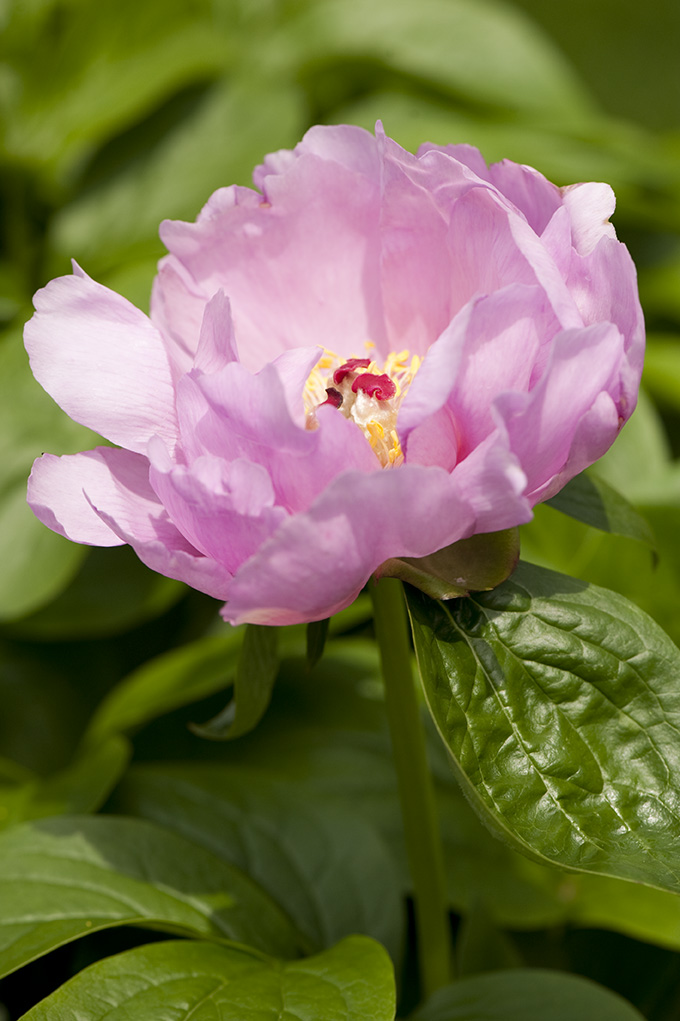 If ever there were a spring day so perfect,
If ever there were a spring day so perfect,
so uplifted by a warm intermittent breeze
that it made you want to throw
open all the windows in the house
and unlatch the door to the canary’s cage,
indeed, rip the little door from its jamb,
a day when the cool brick paths
and the garden bursting with peonies
seemed so etched in sunlight
that you felt like taking
a hammer to the glass paperweight
on the living room end table,
releasing the inhabitants
from their snow-covered cottage
so they could walk out,
holding hands and squinting
into this larger dome of blue and white,
well, today is just that kind of day.
Today ~ Billy Collins
This poem first appeared in Poetry (April 2000). Photo by Ivo M. Vermeulen.
Posted in Science on May 24 2011, by Vinson Doyle
| Vinson Doyle, Graduate Student in Plant Genomics |
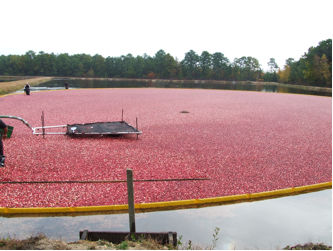
Plants and fungi have an intimate relationship. Some fungi, like mycorrhizal fungi which help a plant’s roots use soil resources more efficiently, are beneficial to plants, while others, like powdery mildew on squash leaves, are obviously harmful. However there are many fungi that exist somewhere on the continuum between friend and foe. To further complicate the matter, whether an individual fungus is beneficial, neutral, or antagonistic may change over time such that apparently harmless fungi can become pathogenic.
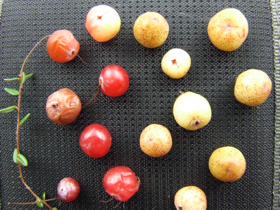
Studying these fungi can be difficult; they do not always make their presence obvious. Imagine tracking an elephant through the forests of East Africa to understand what it eats, where it travels, and how it selects a mate. Now, imagine tracking an individual you can’t see in the wild, or if you can see it, you can’t tell it apart from its siblings. Tracking these wild fungi would have been impossible a decade ago, but with the advances being made in modern genetic methods both here at The New York Botanical Garden and around the world, we are finally able to address the big questions surrounding these tiny organisms.
My work focuses on understanding the genetic diversity of a single fungal species, Colletotrichum gloeosporioides. C. gloeosporioides is a sneaky fungus that is capable of shifting its place on the continuum between harmless and pathogenic to cranberry. The main focus of my research involves understanding how the spores of C. gloeosporioides are dispersed, what other plants it is associated with, and how it reproduces. I hope that a fuller understanding of this fungus will help cranberry growers formulate effective management plans.
But before we can find answers we have to find the fungus.
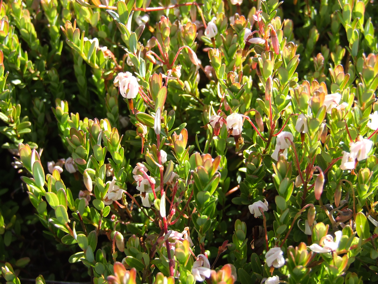

My field work begins in the cultivated and wild cranberry bogs of North America in the hope that by finding the plant, we will find the fungus. In some cases, it is readily obvious that the plants have been infected by a pathogenic fungus. However, we frequently can’t determine which fungus has infected them, so we collect fruits, stems, and leaves and bring them back to the lab for further study. In other cases, we find plants that look perfectly healthy, but we suspect there are fungi lurking beneath the surface. So we take the material back to the Pfizer Plant Research Laboratory for more research. The hunt continues!
In order to study plant-associated fungi, that is, fungi that live within a plant such as C. gloeosporioides does, we must first coax the fungi out of the plant. To do this we place the plant pieces on a suitable growth medium that encourages the fungus to emerge from the plant and to populate the medium; in this way we are able to isolate the fungus and study it more carefully. Inevitably, many different species of fungi emerge onto the growth medium, which means we must isolate and identify each one.

Once we have isolated all the individual fungal strains, we use methods similar to those used in forensics to identify each one. In the Cullman Lab, we use DNA markers that allow us to identify each individual fungal strain within a single species in the same way that forensics specialists use DNA markers to establish whether an individual was at the scene of a crime.
Modern genetic methods have helped us determine that fungal strains are likely moving undetected (disguising themselves as harmless fungi) inside cranberry vines used to establish new farms in disparate regions before revealing themselves as harmful pathogens. This finding will hopefully allow researchers and farmers in the future to better understand the sources of disease epidemics. This knowledge should help farmers implement preventative measures and may lead to new methods for establishing cranberry bogs.
Posted in Photography on May 24 2011, by Ann Rafalko
Ed. note: Larry Lederman, photographer and friend of the Garden (he’s a member of our Advisory Board), has a beautiful exhibit of large-scale tree photographs up right now in the lobby of the amazing Four Seasons restaurant in Manhattan. We wanted to learn more about Larry and his amazing photographs, so we asked him a few questions.
What is the title of the Exhibit at the Four Seasons?
Spring.
How did you choose the photographs for the Exhibit?
To show the presence of trees in our lives. As you walk in the door of the Four Seasons you will first see the pleached Sycamores. It is a striking image: the Sycamores are just beginning to bud, and their severely pruned geometric structure is almost like an x-ray. There is no escaping “the hand of man” expressing a formal sense of beauty on ordinarily unruly Sycamores.
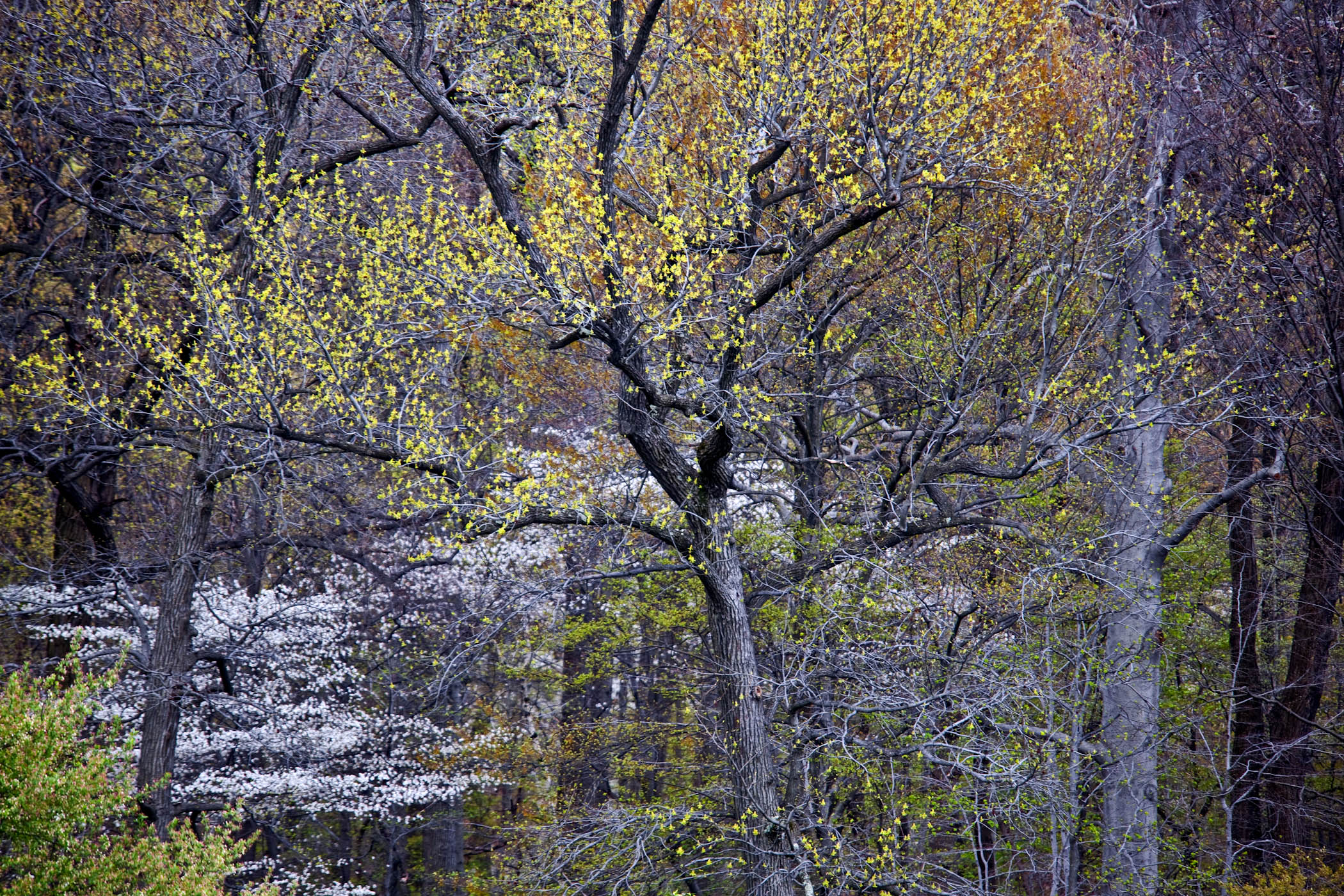 Alongside the Sycamores are the Cherry Trees of Pilgrim Hill in Central Park, showering cherry blossoms like snow. There is no constraint here, no geometry. These trees are over a hundred years old, placed on a hill by Olmsted’s plan to be seen and enjoyed. They express their longevity and the wonder of renewal. And directly opposite the photograph of the Cherry Trees is the photograph of the view of the Native Forest in The New York Botanical Garden, expressing the exuberance of spring.
Alongside the Sycamores are the Cherry Trees of Pilgrim Hill in Central Park, showering cherry blossoms like snow. There is no constraint here, no geometry. These trees are over a hundred years old, placed on a hill by Olmsted’s plan to be seen and enjoyed. They express their longevity and the wonder of renewal. And directly opposite the photograph of the Cherry Trees is the photograph of the view of the Native Forest in The New York Botanical Garden, expressing the exuberance of spring.
The fifty-acre Forest is kept native through careful attention–as authentic as Colonial Williamsburg and as diligently cared for–to transport us to an earlier time, our American Eden. The other two images also show us spring’s joy in cultivated trees planted for pleasure. Trees reflect our culture, our communion with nature, without having to retreat to wilderness.
How did you get into taking photographs?
I was interested in and enjoyed trees. It was that interest the got me into photography; the subject preceded the medium. But once I learned how to use the camera, I expanded my subjects. For example, I have spent the last five years doing landscapes evocative of the Hudson River School of painters, among other things. Last year I had a show at Olana, the home and studio of Frederic Edwin Church, one of the founders of the Hudson River School.
When did you start and how did you learn?
I started about nine years ago with film and then moved to digital photography. I largely taught myself, which is the way I like to learn. But teaching yourself requires a lot of reading and many museum visits. It also allows you make a lot of mistakes and to develop bad habits, which you have to watch out for and correct. I find that it is necessary to take a few courses from time to time.
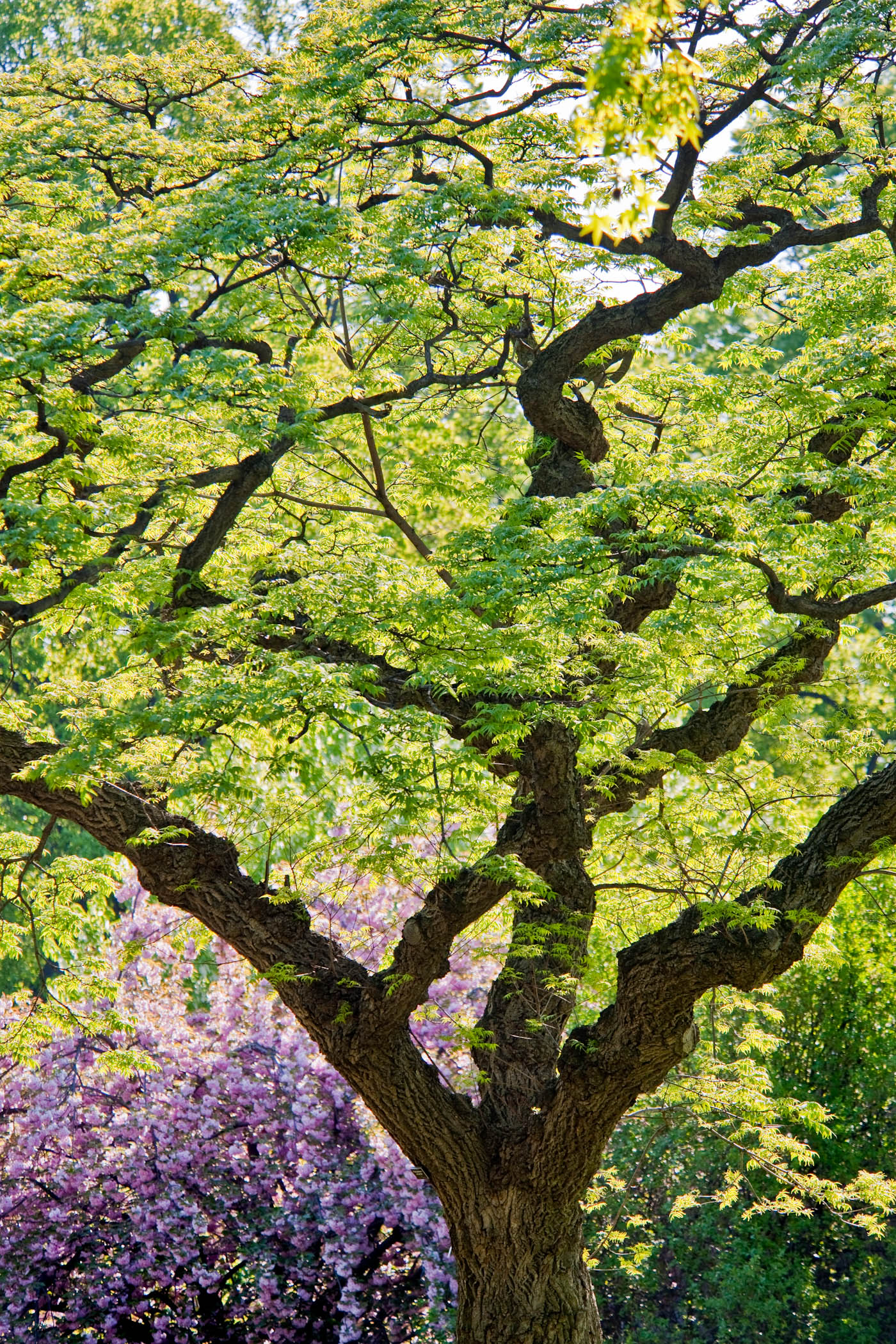 How did you come to exhibit at the Four Seasons?
How did you come to exhibit at the Four Seasons?
They had seen the calendars that I have been doing for the Garden over the past five years.
Your photographs are very large, some are 6×9 feet!
Images of trees and forests show very well when they are large. Photographs help you to see structure and form in a way that is difficult to see otherwise. When they are large there is an emotional impact that informs your sense of the divine. It is the way that I see the images when I take them. For me, photography is an emotional experience.
How often do you photograph?
Almost every day, even when it rains and snows. And I am at the Garden at least two or three times a week, following the changes in the light and the seasons.
I understand that you are working on a book with the Garden?
We are doing a book to be called Magnificent Trees of The New York Botanical Garden. We expect that it will be published in 2012, in time for Christmas.
I also understand that the proceeds from the sales of the photographs at the Four Seasons will go to the Garden.
That is correct. The Garden has been an inspiration for me.
When will the exhibit at the Four Seasons begin?
It is up now through at least June 20, possibly through the end of June. It is in the lobby, which is a landmarked room, and you can visit the exhibit without going upstairs to the restaurant.
Posted in Photography on May 24 2011, by Ann Rafalko
The new Azalea Garden is about so much more than azaleas. The garden is a sun-dappled Eden; the perfect place to sit and enjoy the warmth of summer.

In the Azalea Garden (photo by Ivo M. Vermeulen)